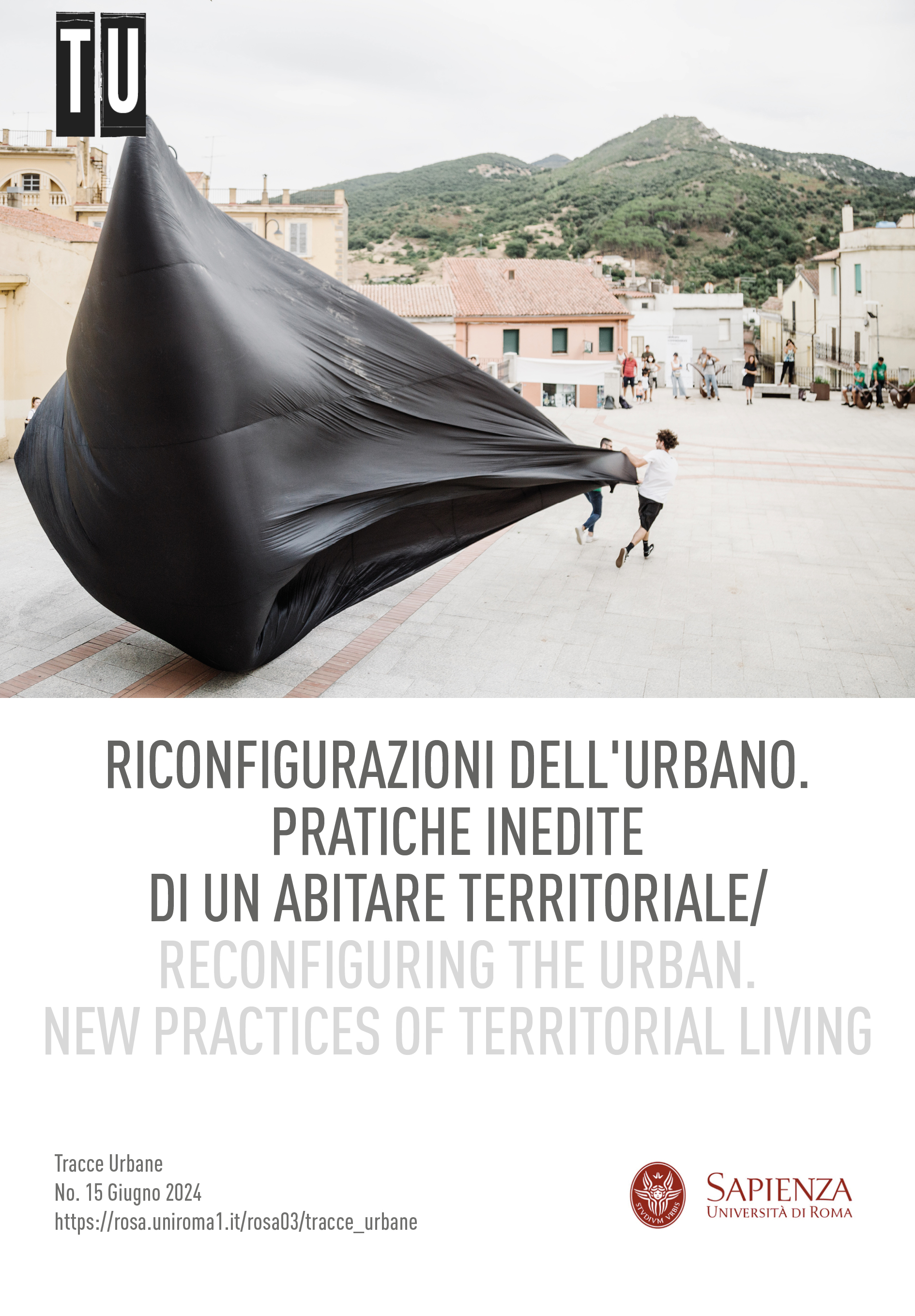Cultural practices for territorial cohesion
DOI:
https://doi.org/10.13133/2532-6562/18662Keywords:
Territorial cohesion, Cultural regeneration, Situated practicesAbstract
In the context of an overall trend of global unification, we are witnessing an increase in territorial inequalities that see cities grow and flourish at the expense of territories increasingly seen as marginal, fragile, and often the object of extraction of human and material resources. Within this picture, various attempts, political, academic or applied, move in the direction of overcoming the urban-rural binomial and attempt to give a new centrality to marginal territories based on the local cultural (festivals, residential artistic productions or regenerated spaces) or ecosystemic (biophysical, aesthetic, educational or recreational) assets that characterise them. Through the examination of Borgofuturo, an experience of cultural regeneration in the inland Le Marche region, we analyse how giving support to situated cultural practices can create fruitful relations and long-lasting processes which enable these territories to overturn dominant narratives of territorial polarisation and of value extraction, giving cultural actors a new leading role in discourses and policies of society-territory co-evolution.
References
Barbera F., De Rossi A. (2021). Metromontagna. Un progetto per riabitare l’Italia. Donzelli Editore.
Barca F. (2009). «An agenda for a reformed cohesion policy: A place-based approach to meeting European Union challenges and expectations» (Barca Report). Bruxelles: European Parlament.
Barca F. (2018). Politica di coesione: tre mosse. IAI Documents, Bruxelles: European Parlament.
Barca F., Casavola P., Lucatelli S. (2014). Strategia Nazionale per le Aree Interne. Definizione, Obiettivi, Strumenti e Governance. Materiali Uval – Dipartimento per lo Sviluppo e la Coesione economica, 31.
Barca F., McCann P., Rodríguez-Pose A. (2012). «The Case for Regional Development Intervention: Place-Based Versus Place-Neutral Approaches*». Journal of Regional Science 52: 134-152.
Calafati A. (2015). Città tra sviluppo e declino, Saggi. Natura e artefatto. Roma: Donzelli Editore.
Escobar A. (1995). Encountering development: the making and unmaking of the Third world. Princeton, NJ: Princeton University Press.
European Union (2007). «Treaty of Lisbon Amending the Treaty on European Union and the Treaty Establishing the European Community». Official Journal of the European Union. Disponibile su: https://www.europarl.europa.eu/factsheets/en/sheet/5/the-treaty-of-lisbon
Faludi A. (2007). Territorial Cohesion and the European Model of Society. Illustrated edition. Cambridge, Mass: Lincoln Institute of Land Policy.
Giacomelli M., Calcagni F. (2022). Borgofuturo+ Un progetto locale per le aree interne. Macerata: Quodlibet.
Lucatelli S., Luisi D., Tantillo F. (2022). L’Italia lontana. Una politica per le aree interne. Roma: Donzelli Editore.
Medeiros E. (2016). «Territorial Cohesion: An EU concept». European Journal of Spatial Development, 14: 30-30.
Pittau M.G., Zelli R., Gelman A. (2010). «Economic Disparities and Life Satisfaction in European Regions». Social Indicators Research, 96(2): 339-36.
Sen A. (1999). Commodities and Capabilities. New Delhi: Oxford University Press.
Società dei Territorialisti/e. (2021). «Manifesto di Camaldoli per una nuova centralità della montagna». Scienze Del Territorio, 9.
Sørensen J.F.L. (2014). «Rural-Urban Differences in Life Satisfaction: Evidence from the European Union». Regional Studies 48: 1451-1466.
Downloads
Published
How to Cite
Issue
Section
License
Copyright (c) 2024 Inabita Laboratorio Territoriale

This work is licensed under a Creative Commons Attribution 4.0 International License.
NOTA DI COPYRIGHT
Proposta di licenza Creative Commons
1. Proposta per riviste Open Access
Gli autori che pubblicano su questa rivista accettano le seguenti condizioni:
Gli autori mantengono i diritti sulla loro opera e cedono alla rivista il diritto di prima pubblicazione dell'opera, contemporaneamente licenziata sotto una Licenza Creative Commons - Attribuzione che permette ad altri di condividere l'opera indicando la paternità intellettuale e la prima pubblicazione su questa rivista.
Gli autori possono aderire ad altri accordi di licenza non esclusiva per la distribuzione della versione dell'opera pubblicata (es. depositarla in un archivio istituzionale o pubblicarla in una monografia), a patto di indicare che la prima pubblicazione è avvenuta su questa rivista.
Gli autori possono diffondere la loro opera online (es. in repository istituzionali o nel loro sito web) prima e durante il processo di submission, poiché può portare a scambi produttivi e aumentare le citazioni dell'opera pubblicata (Vedi The Effect of Open Access).


